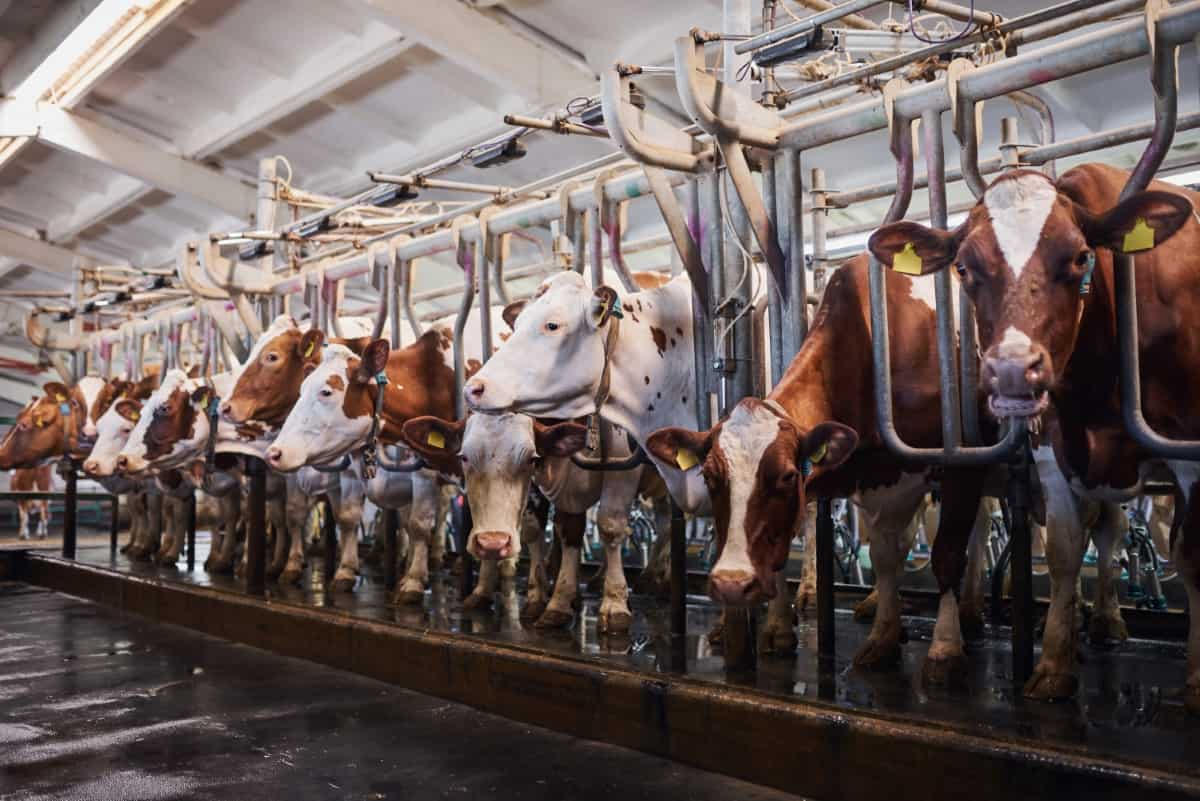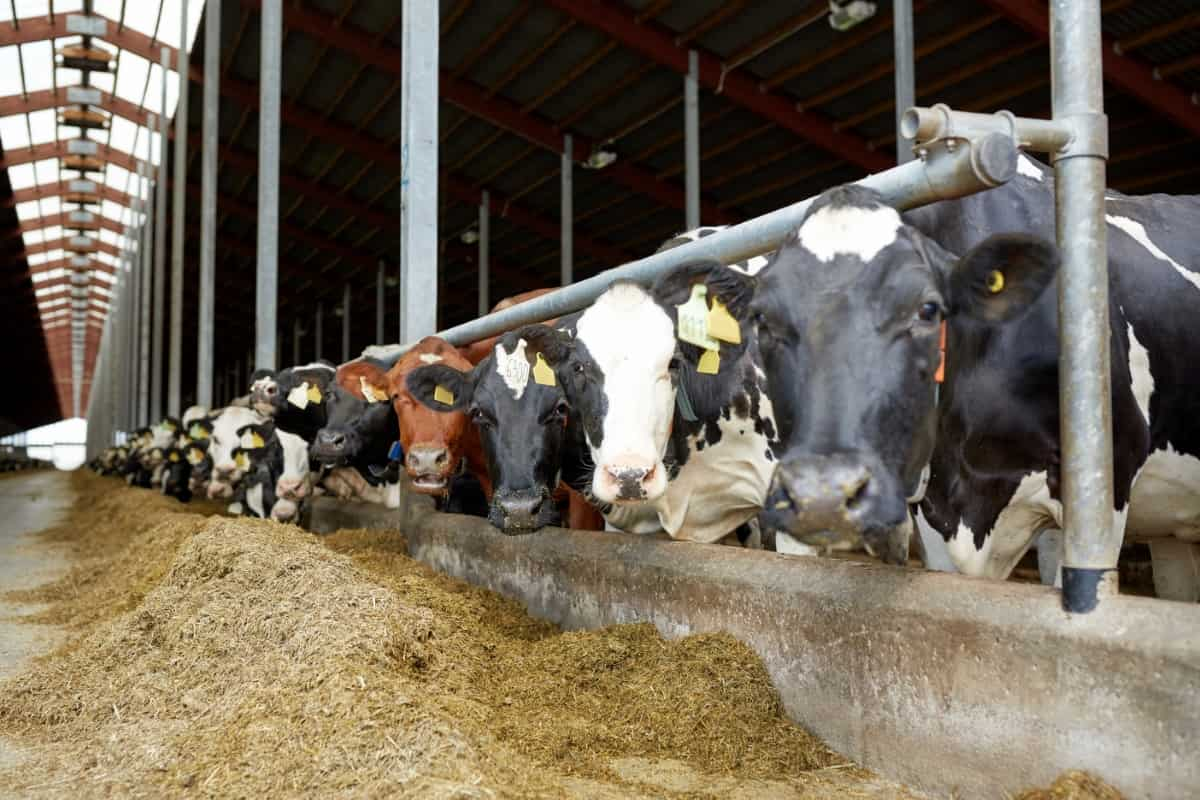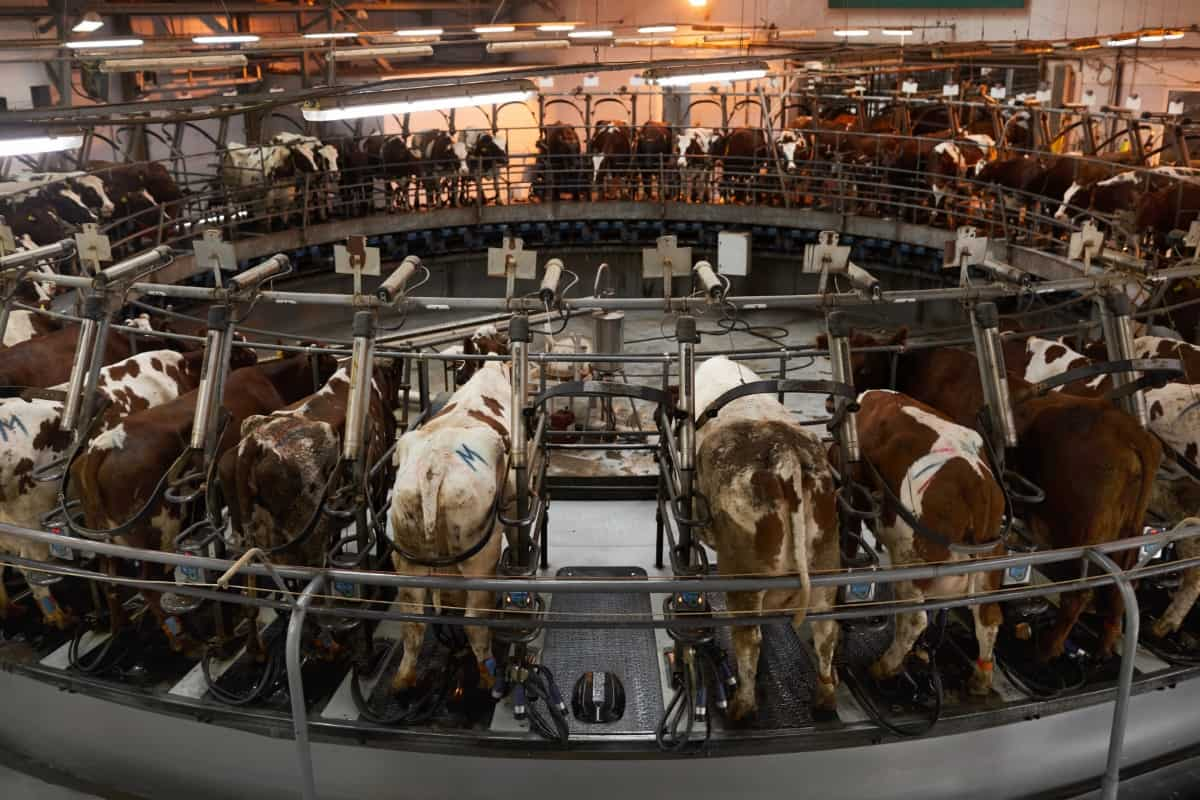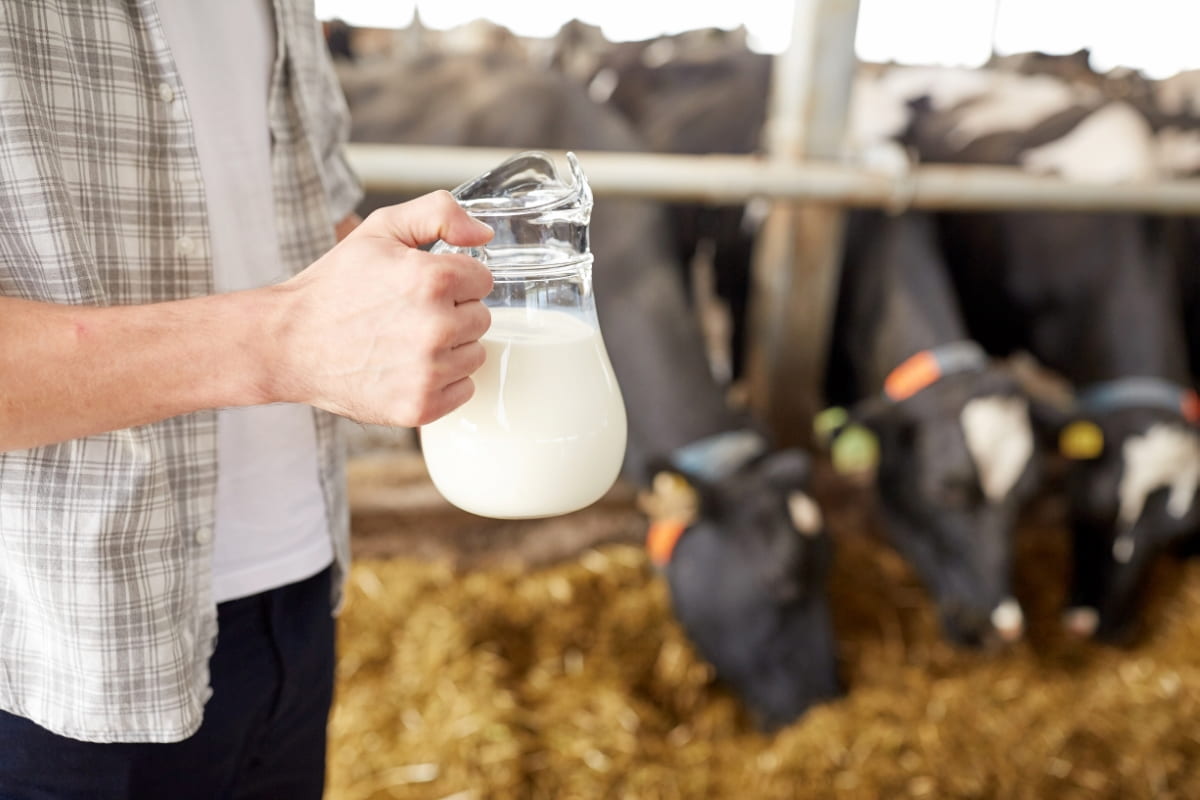Starting a dairy farm allows you to enter the thriving agricultural industry and contribute to food production. With an increasing demand for dairy products globally, there is ample opportunity for growth and profitability.

How to Start a Dairy Farm with No Experience
Understand the Basics
Familiarize yourself with the different breeds of cattle used in dairy farming. Each breed has its characteristics that can impact milk production and overall profitability. Learn about their feed requirements, temperament, and ideal living conditions. Next, educate yourself on proper animal care practices.
This includes learning how to handle and manage cattle safely, ensuring they have access to clean water and nutritious feed, and providing them with appropriate shelter. Understanding the milking process is also essential. It’s important to learn about common diseases that can affect cattle. Familiarize yourself with symptoms, prevention methods, and treatment options so you can keep your animals healthy.
Select the Right Location
Firstly, you need to ensure that there is ample land available for your dairy farm. Cows require plenty of space to graze and roam freely. Look for an area with fertile soil that can support nutritious pasture growth. Select a place near a reliable water source or consider investing in irrigation systems if necessary. The climate plays a main role in dairy farming. Cows are sensitive animals that thrive in moderate temperatures. Environmental regulations should not be overlooked either. Familiarize yourself with local zoning laws and any restrictions regarding waste disposal.
Acquire Essential Knowledge About Cattle Breeds
Understanding the different types of breeds available will help you make decisions for a successful venture. Cattle breeds vary in terms of milk production, adaptability to different climates, and overall health. It’s essential to research and learn about the specific characteristics of each breed before making your selection.
Some popular dairy cattle breeds include Holstein, Jersey, Guernsey, Ayrshire, and Brown Swiss. Each breed has unique qualities that can impact milk production and quality. To further enhance your knowledge of cattle breeds, connect with experienced farmers or join local farming communities.
Build Infrastructure
This includes constructing suitable housing for your cattle, providing proper feeding and watering systems, and ensuring adequate waste management. It would help if you created comfortable housing facilities for your dairy animals. A well-ventilated barn with enough space will help prevent diseases and promote overall cow health. Additionally, make sure the flooring is non-slippery and easy to clean.
Next, install an efficient feeding system that allows you to provide a balanced diet for your cows. This may include using feed troughs or automated feeding equipment. It’s vital to ensure that your cows have access to fresh water at all times as well. Proper waste management is crucial on a dairy farm. Implementing measures such as drainage systems or manure pits will help keep the environment clean and prevent contamination of water sources.
In case you missed it: Livestock and Dairy Farming Subsidies: Financial Assistance by the Government of India

Implement Best Practices for Cattle Health and Nutrition
Provide a balanced diet: Cows require a mix of carbohydrates, proteins, minerals, and vitamins in their diet. Consult with a veterinary nutritionist to make a customized feeding plan that meets the specific nutritional needs of your herd.
Maintain proper hygiene: Cleanliness plays a vital role in preventing diseases on your farm. Regularly clean the barns, water troughs, and equipment used for feeding to minimize contamination risks.
Ensure sufficient water supply: Water is essential for digestion, hydration, and milk production in cows. Make sure there is always clean and fresh water available for them at all times.
Vaccinate regularly: Consult with a veterinarian to develop an appropriate vaccination schedule for your herd based on regional disease risks.
Business Plan for Your Dairy Farm
- Market analysis: Research the demand for dairy products in your area, identify potential customers, and analyze competitors’ pricing and strategies.
- Financial projections: Estimate the costs involved in setting up and running your dairy farm, including land purchase or lease, infrastructure development, cattle acquisition, feed expenses, labor costs, veterinary care, and marketing expenses.
- Production plan: Define the number of cows you intend to start with and outline their expected milk production levels along with plans for breeding and herd expansion.
- Risk management: Identify potential risks such as disease outbreaks or fluctuations in milk prices and develop contingency plans to mitigate these risks.
- Operations management: Detail day-to-day operations like feeding schedules, milking procedures, waste disposal methods, staff responsibilities, record-keeping practices, etc., ensuring efficient management of resources.
Obtain Permits and Licenses
Before you can start your dairy farm, it is crucial to obtain the necessary licenses. This step is often overlooked but is essential for ensuring that your business operates legally and meets all regulatory requirements. To begin, research the specific permits and licenses required in your area for operating a dairy farm. These may include zoning permits, environmental permits, as well as licenses for milk production and processing. Each location may have different regulations, so it’s essential to familiarize yourself with local laws.
Once you have identified the necessary permits and licenses, gather all the required documentation and submit them to the appropriate authorities. This process may involve filling out applications, providing financial statements or proof of insurance, and undergoing inspections. By complying with regulations from the beginning, you not only avoid legal troubles but also gain credibility with both consumers and potential investors.
Market and Sell Dairy Products
The effective strategy for marketing your dairy products is to establish partnerships with local businesses. This could include grocery stores, restaurants, cafes, or even schools and hospitals. By supplying these establishments with fresh and high-quality dairy products, you can build long-term relationships that benefit both parties.
In case you missed it: Dairy Farm Project Report With 10 Cows: Cost and Profits with ROI Calculations

Another avenue for promoting your dairy products is through farmers’ markets or direct-to-consumer sales. In addition to offline marketing strategies, it’s essential to establish an online presence for your dairy farm. Encourage customers to spread the word about your delicious dairy products by offering incentives such as referral discounts or hosting special events on-site at your farm. Remember that successful marketing goes hand-in-hand with exceptional product quality.
Manage Finances and Budgeting
Create a detailed budget that includes all your expenses, such as animal feed, labor costs, veterinary care, equipment maintenance, and marketing. This will help you understand where your money is going and identify areas where you can cut costs or allocate funds more efficiently.
Next, keep accurate records of all financial transactions related to your dairy farm. Use accounting software or spreadsheets to track income and expenses regularly. Implement cost-effective measures such as bulk purchasing animal feed or negotiating better prices with suppliers.
Seek Mentorship and Learn from Experienced Farmers
Seeking mentorship allows you to learn from their years of hands-on experience and avoid common pitfalls that will help you make decisions for your farm. Experienced farmers can provide invaluable advice on various aspects of dairy farming. Connecting with experienced farmers can be done through local agricultural organizations, industry events, or even online forums dedicated to dairy farming. Remember that starting a dairy farm requires continuous learning and adaptation.
In case you missed it: How to Build Dairy House/Shed/Barn in 6 Steps: DIY Guide for Beginners

Conclusion
Starting a dairy farm also allows you to contribute to food security by producing nutritious dairy products for your community. Dairy farming provides an essential food source that is rich in vital nutrients. Additionally, starting a dairy farm allows you to build strong connections within your community.
- Ultimate Guide to Ossabaw Island Hog: Breeding, Raising, Diet, and Care
- Ultimate Guide to Juliana Pig: Raising Facts, Size, Diet, Care, and Lifespan
- Raising Lleyn Sheep: Disadvantages, Price, Uses, Characteristics, and Care
- Ultimate Guide to Meishan Pig: Breed Facts, Breeding, Raising, and Care
- Ultimate Guide to Teacup Pigs: Raising, Diet, Lifespan, Cost, and Care
- Guide to Raising Poll Dorset Sheep: Facts, Profile, Characteristics, Uses, and Care
- Ultimate Guide to Bighorn Sheep: Characteristics, Diet, Lifespan, Breeding, and Lifecycle
- Ultimate Guide to Raising Katahdin Sheep: Farming Facts, Breed Profile, Uses, and Care
- Ultimate Guide to Raising Oreo Cows: Belted Galloways Farming Facts, Profile, Uses, and Care